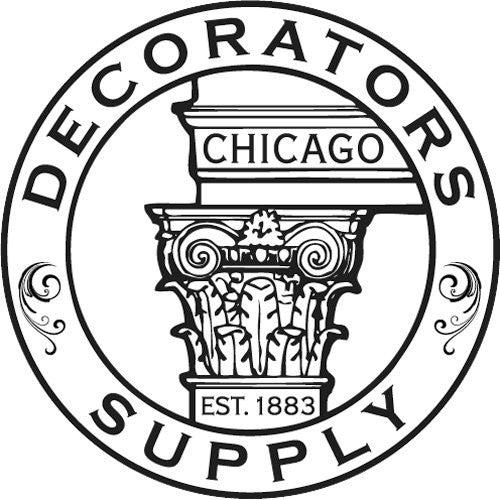PRODUCT DETAILS - PLASTER PRODUCTS
PRODUCT DESCRIPTION – Plaster Ornaments
Collections:
- Ceiling Designs
- Mouldings – Plaster Crown & Frieze
- Medallions
- Column Capitals & Pilaster Capitals – Select Styles & Sizes
- Corbels – Select Styles & Sizes
- Specialty Items: Large Shields, Large Festoons, Niche Shells
Lead Times:
- 2 weeks is the typical lead time for medallions, corbels and specialty items
- 4-6 weeks is the typical lead time for mouldings, ceilings and large orders
Returns: All items are made to order. Returns/refunds cannot be accepted
Decorators Supply’s history as a manufacturer of plaster ornamentation can be traced back to the World’s Columbian Exhibition of 1893 which provided the catalyst for our early growth and prosperity. Over the next few decades we employed dozens of European artisans who modeled and carved the beautiful designs you are viewing. We continue to offer authentic plaster designs that feature the same characteristics that has made plaster the product of choice for well over 150 years:
- Highly Detailed – Historically Accurate
- Hand Crafted In the USA – Since 1883
- All Natural Green Materials – No Plastics of any kind
- Reinforced With Natural Hemp Fibers for Strength and Ease of Installation
- Naturally Fireproof and Non Toxic
- Design Detail and scope of designs that are prohibitively expensive in wood
Installation:
View our videos to see how easy plaster is to install. Standard carpentry tools can be used for your installations. A few myths regarding plaster:
MYTH – Plaster is Fragile and Hard to Install
One of the most common myths about plaster ornament is that it is fragile and hard to install, when in reality plaster is quite durable and can be installed with standard carpentry tools. Ornamental plaster is comprised of essentially three materials: 1) molding plaster, 2) water and 3) some type of reinforcing material. This reinforcement serves in a sense to bind the plaster together. The most common reinforcing materials are hemp (shredded ship rope, in lieu of the horse hair used in the old days!), or fiberglass, either sprayed or in mesh form. During manufacturing, the plaster molds are first partially filled with plaster, followed by the introduction of the reinforcing material. The final step involves applying a final layer of plaster over the reinforcement, essentially encasing this material within the plaster. The reinforcement serves two purposes: 1) Gives the plaster strength, allowing the use of standard carpentry anchors (screws, toggle bolts etc.) in “hanging” the ornament 2) Allows for the use of less plaster, resulting in lighter cast weight.
Additionally, there are a wide range of resistant Plaster of Paris products (Tuf-Cal, Hydrocal to name just two) that allow casting of interior ornamental designs where traditional Plaster of Paris would not be recommended. Consult with your plaster caster to determine the best product for your use.
MYTH – Plaster is Heavy
A second very common myth is that plaster is heavy. While plaster is clearly heavier than a resin/foam product, a significant percentage of the initial weight in plaster after casting is in the water that is used in mixing up the plaster in preparation for casting. During curing (drying) much of this water and weight literally evaporates! Additionally, the use of the above discussed reinforcing materials allows for the use of significantly less plaster during casting. Use of these reinforcements combined with the technique of hollowing out the backside of plaster ornaments results in surprisingly light plaster ornaments. Visitors to our factory are regularly amazed as to how light our plaster ornaments are versus their expectations.
